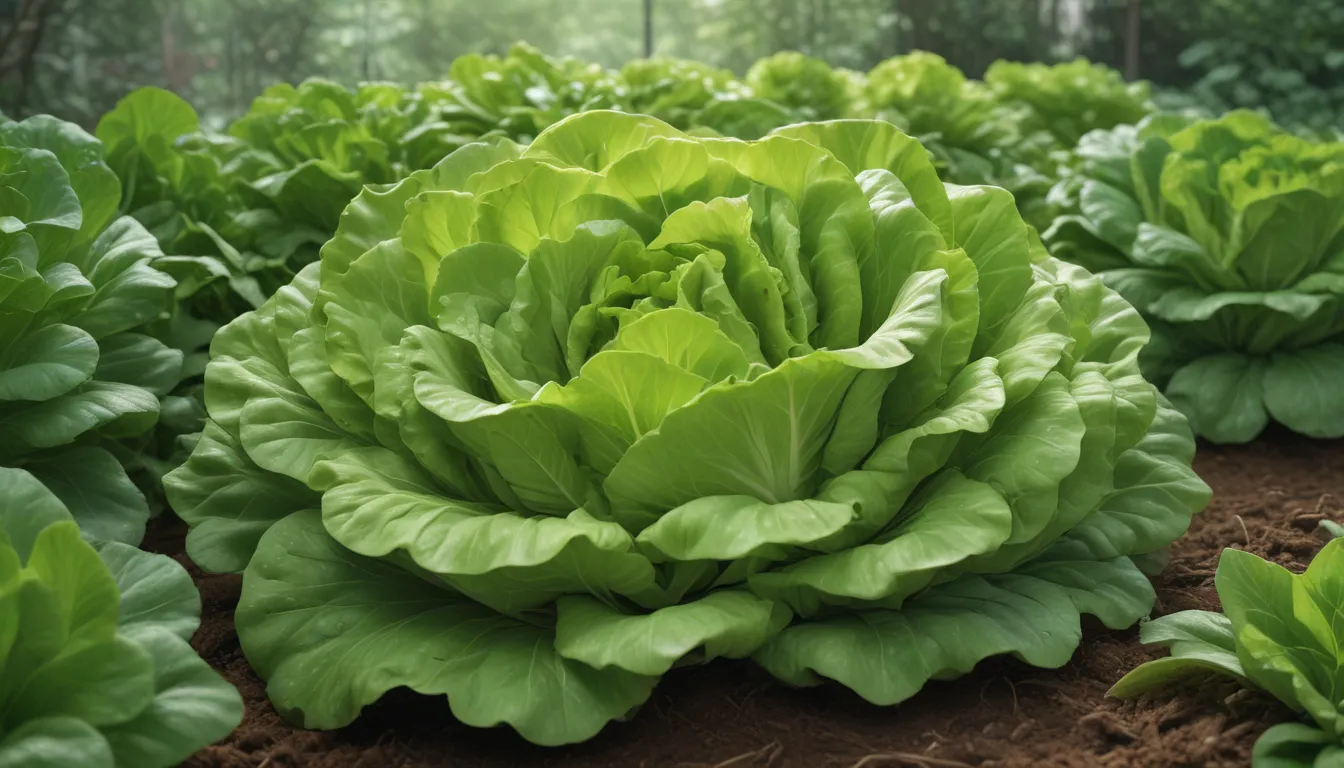Growing Buttercrunch Lettuce: A Guide to Cultivation, Harvesting, and Recipes

Are you a fan of lettuce but tired of the same old varieties like ‘Iceberg’ and romaine? If so, you might want to consider growing ‘Buttercrunch’ lettuce. With its softer texture and milder flavor, this butterhead variety is a great addition to any garden.
In this in-depth guide, we’ll cover everything you need to know about growing ‘Buttercrunch’ lettuce, from its cultivation and history to harvesting and cooking ideas. So grab your gardening gloves and let’s get started!
The Cultivation and History of ‘Buttercrunch’
Lettuce has a long history that dates back to the ancient Egyptians, who were the first known civilization to use it for food, oil, and medicine. Over time, different varieties of lettuce were developed in Europe and Asia, eventually making their way to the American colonies.
‘Buttercrunch’ lettuce is a butterhead variety that was developed by George Raleigh, a professor at Cornell University. Although not considered an heirloom, this award-winning cultivar has been a staple in gardeners’ plots since the 1960s.
Butterhead lettuces, like ‘Boston’ and ‘Bibb,’ differ from crisphead varieties such as ‘Iceberg’ in that they form loose, soft heads that can be harvested as individual leaves throughout the growing season.
Propagating ‘Buttercrunch’ Lettuce
Whether you choose to start your lettuce from seed or opt for seedlings, ‘Buttercrunch’ is relatively easy to propagate. When starting seeds indoors, be sure to choose a nutrient-rich compost or potting mix to give your plants a healthy start.
If you decide to sow seeds directly in the ground, wait until after the threat of frost has passed. Plant the seeds about 1/8 inch deep and space them at least 10-12 inches apart to allow room for the heads to grow.
Remember to protect your seedlings from extreme temperatures and monitor them carefully for signs of pests and disease. With proper care, you can expect to harvest your first crop of ‘Buttercrunch’ lettuce in about two months.
How to Grow ‘Buttercrunch’ Lettuce
‘Buttercrunch’ lettuce prefers cooler temperatures and partial shade, making it an ideal choice for spring and fall plantings. Consistent watering is key to keeping your plants healthy, but be careful not to overwater, as this can lead to rotting.
In warmer climates, consider using shade cloth or row covers to protect your plants from excessive heat. ‘Buttercrunch’ lettuce can also be grown in containers or hydroponic systems, giving you the flexibility to grow it in a variety of environments.
Harvesting and Cooking with ‘Buttercrunch’ Lettuce
When it comes time to harvest your ‘Buttercrunch’ lettuce, there are several options available to you. You can harvest individual leaves throughout the season, cut full heads, or even harvest the plants for their microgreens.
Microgreens are a nutrient-dense and flavorful addition to salads, sandwiches, and other dishes. They can be harvested in as little as a few days and offer a fresh burst of flavor to your culinary creations.
When it comes to cooking with ‘Buttercrunch’ lettuce, the possibilities are endless. Use it to wrap up a variety of fillings in lettuce wraps, add it to salads, or top your favorite dishes with its tender leaves. Let your creativity shine in the kitchen!
Quick Reference Growing Guide
- Plant Type: Annual vegetable
- Native to: Mediterranean region
- Season: Spring-fall, winter with cold protection
- Exposure: Full sun to part shade
- Time to Maturity: 45-60 days
- Water Needs: Moderate
- Common Pests: Aphids, deer, rabbits, slugs, snails
- Common Disease: Bacterial leaf spot, bottom rot, damping off, downy mildew
- Height: 9-14 inches
- Spread: 6-12 inches
Where to Buy ‘Buttercrunch’ Lettuce Seeds
You can typically find ‘Buttercrunch’ lettuce seeds at your local garden center or online. Consider purchasing your seeds from reputable suppliers like Eden Brothers, who offer a variety of packet sizes and in bulk.
In conclusion, ‘Buttercrunch’ lettuce is a versatile and easy-to-grow crop that is sure to become a favorite in your garden. Whether you’re a seasoned gardener or a beginner, this butterhead variety is a great choice for salads, wraps, and more. So why not give it a try in your garden this season? Happy growing!





